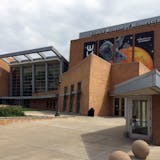It's the busy planting season for Eric Reller all year round inside a dark shipping container in Brooklyn Park.
The freight container holds a mini hydroponic farm where he plants seeds and rows of lettuce under LED lights. But the leafy greens aren't for sale.
Instead, the lettuce is sent to Twin Cities nonprofits that provide meals to people in need through a new pilot program from Second Harvest Heartland, Minnesota's largest food bank.
"It's the future of food and we want to see if a food bank can be a part of that," said Bob Branham, director of produce strategy at Second Harvest. "There's a need."
Second Harvest is the first food bank in the nation to do a program like this, Branham said, adding that other food banks across the country are watching to see its progress.
As one of the nation's largest food banks, Second Harvest specializes in "food rescue," taking millions of pounds in produce donated by farmers, manufacturers and grocers to repackage and distribute to food shelves. And part of the nonprofit's growing focus is on fresh produce, doubling the quantity in the last six years.
Since lettuce wasn't as feasible because it doesn't last long and grocers prefer to sell it, Second Harvest stepped up to grow its own, buying the container hydroponic farm last year for $100,000, paid for by a donor. While hydroponic farms aren't new, food banks aren't often in the business.
"What's innovative is a food bank, usually at the end of the supply chain, is putting itself at the front of the supply chain," said Branham, a former leader at General Mills. "We don't have access to leafy greens in food rescue."



